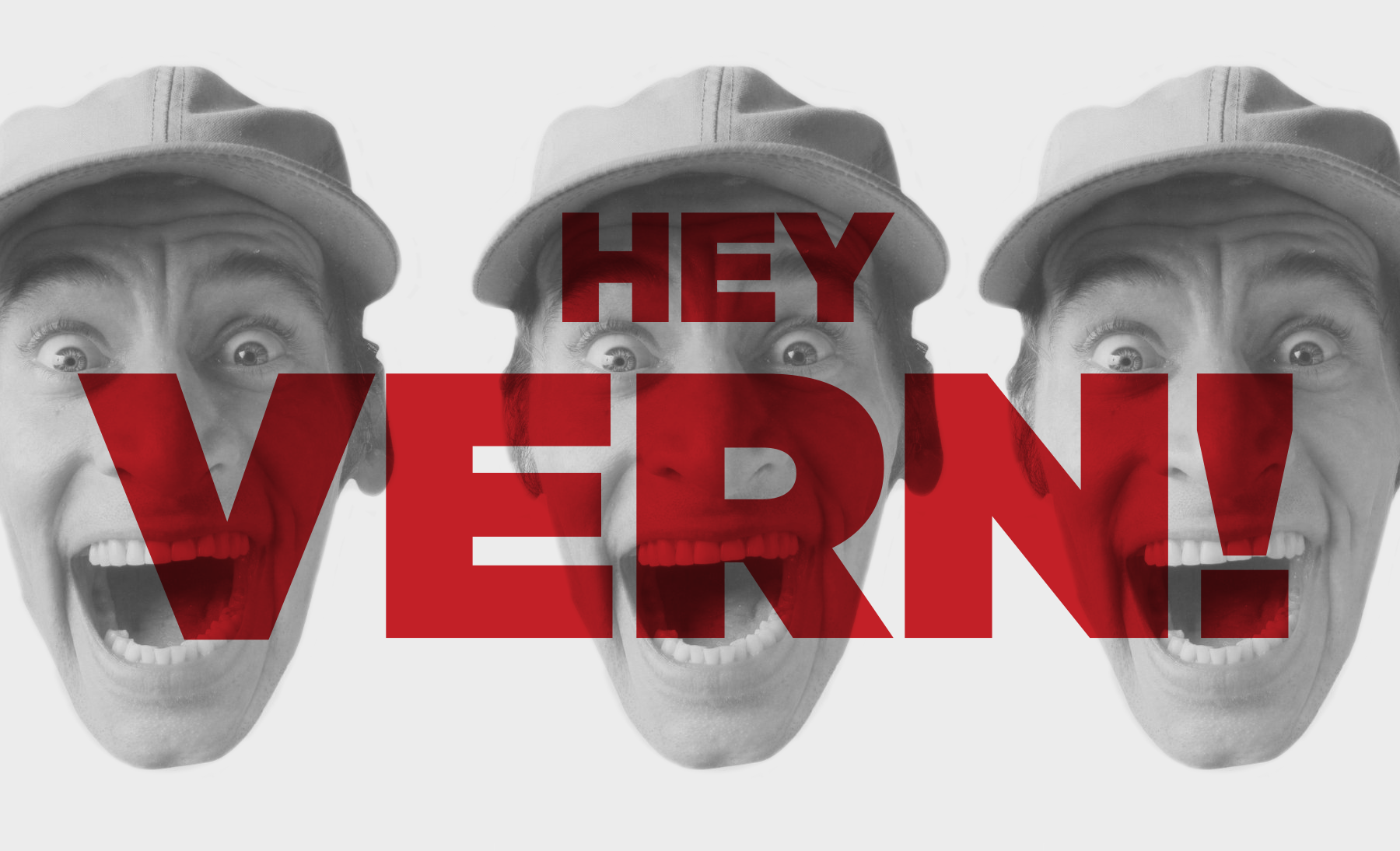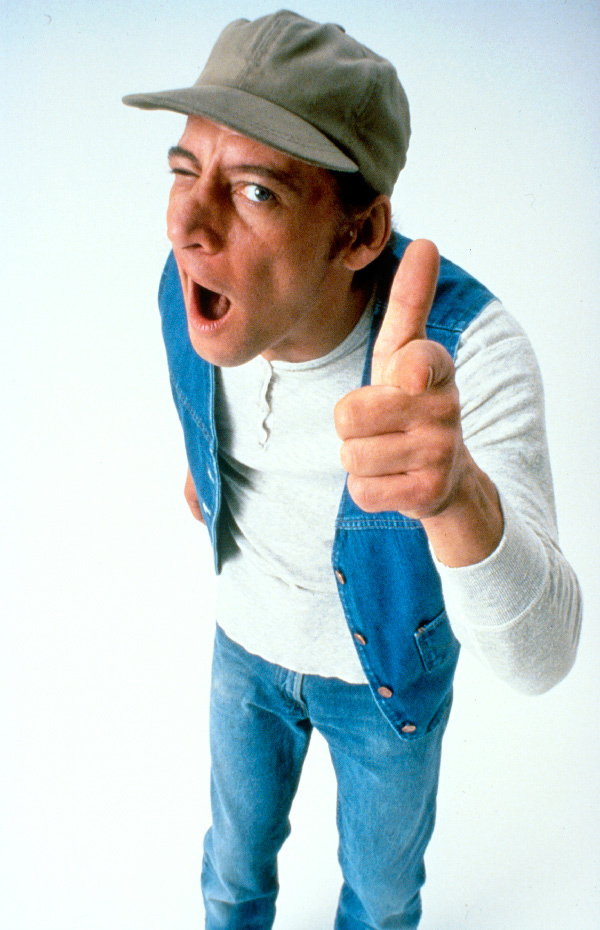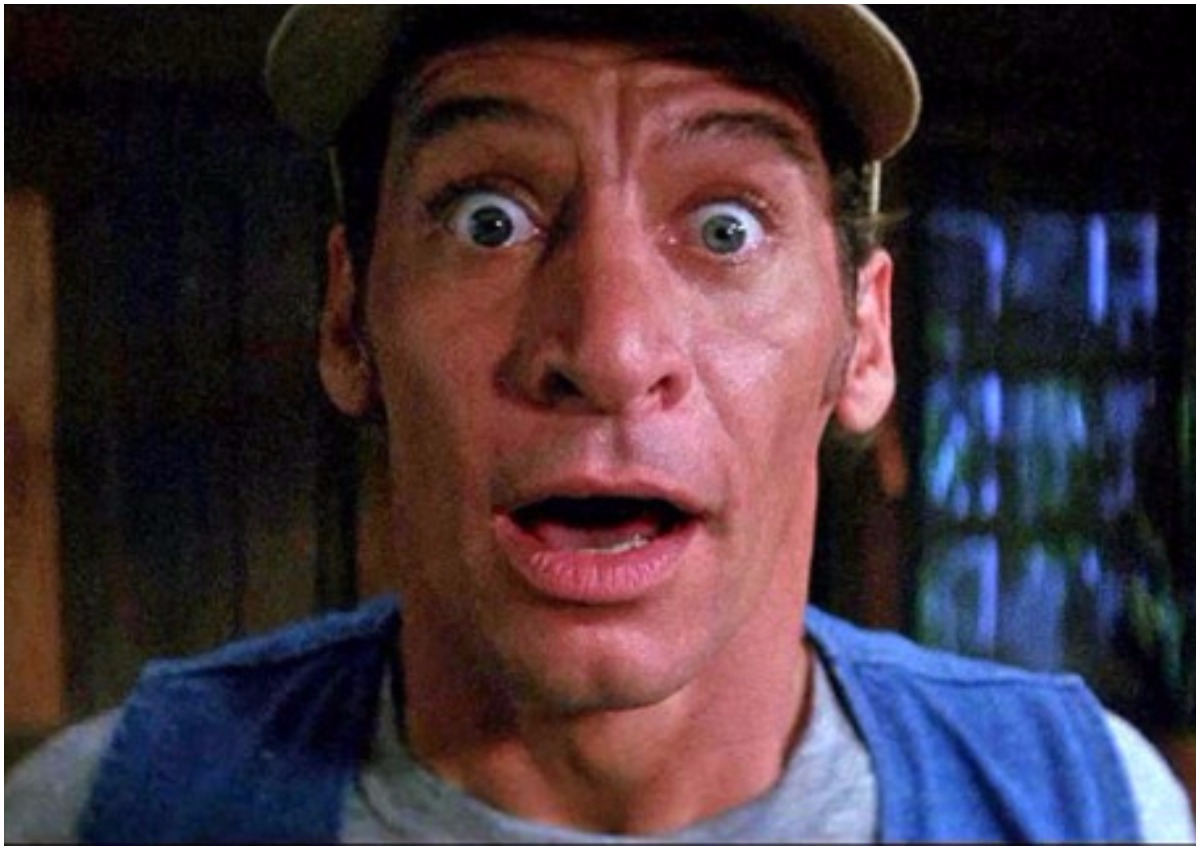Know What I Mean, Ron?
/By Gabe Bullard
Like many of his predecessors and successors, White House Press Secretary Larry Speakes didn’t always get along with reporters. But on April 21, 1986, he decided to have fun with the people he usually sparred with.
Speakes started a background briefing with a promise he'd go over travel logistics for President Ronald Reagan's upcoming trip to Asia after a short comment on "economic policy, monetary policy, and so forth," from "a deputy assistant to the president."
"His name, for the record, or for your information only," Speakes continued, "…is J. Albert Varnay."
It didn't make much sense. Why was this unknown, presumably low-ranking, "J. Albert" taking the podium? And why, if this was a background briefing, were cameras present?
"What are we taking a picture of?" one reporter asked as Speakes stepped aside.
That became clear as soon as J. Albert spoke, his voice hitting the microphone as he walked into the briefing room.
"Vern?"
In walked actor Jim Varney, dressed as his Ernest P. Worrell character in a denim vest, gray T-shirt, and a khaki cap.
"I figured maybe Vern was here," he said once the reporters' first wave of laughter subsided. "He wandered off the tour. We were just gonna go check out that Smith Brothers museum. And besides that, he's got my lunch money."
Varney kept the press corps laughing for the next 10 minutes. He changed hats to play other characters — an old man giving complicated directions to the White House, a service station clerk helping Ernest with his taxes.
In 1986, this was an eternity in Ernest time. Varney hadn't yet made Ernest Goes to Camp or any of the movies that would become his trademark. For the last six years, he had been a pitchman, popping up 3o seconds at a time in local commercials for everything from car dealerships to Mello Yello.
The ads were shot from the perspective of Ernest's unseen neighbor, Vern. Predictably, Ernest would drop in to talk about great deals or new products, then end up falling off a roof, breaking Vern's belongings, or getting electrocuted.
From a technical standpoint, the commercials were remarkable. Varney — a trained classical actor — turns each pitch into a comedic monologue, stretching his face for laughs and punctuating points with his catchphrase, "knowwhutimean." When he moves his body, his limbs seem just as pliant as his face. The camera's fisheye lens exaggerates each gesture and its movement draws the eye toward the action. Each spot is a manic half-minute of single-shot silliness, executed perfectly by Varney and director John Cherry.
Cherry and Varney made hundreds, maybe even thousands of these ads for local markets. After six years, Ernest had a household face, recognizable even to members of the White House press corps. There was an Ernest fan club and newsletter. A month after his appearance in the West Wing, Varney rode in the Indianapolis 500 parade. The crowd's overwhelmingly warm and familiar response inspired Disney executives in the audience to pursue a movie deal. From there, Ernest went to camp and to jail. He saved Christmas and was scared stupid. He won two Emmys for his one-season-long children's show on CBS. For a few years, Ernest was a phenomenon.
And he was a Southern phenomenon.
Perhaps the least exaggerated of Ernest’s characteristics was his accent, which was similar to Varney's own Kentucky lilt. This had to have been a choice. Ernest ads aired across the nation, so there wasn't a need to sound like a particular region. And Varney was able to take on other accents handily. He decided to keep Ernest southern. And that day at the White House, he played his other characters as Southern, too.
When I got a recording of the press conference from the Reagan Presidential Library, I was afraid to play it, worried that I’d hear a lot of official people laughing at the silly Southerner. But as I listened, I didn't cringe like I do when I come across another live-action Southern cartoon like Larry the Cable Guy, even though Varney is doing something similar.
When describing how he played Ernest, Varney once said, "Everyone knows someone like that." In this way, Ernest is a stack of stereotypes. He's an amalgamation of surface-level Southern traits, played on screen with first-hand familiarity and comedic exaggeration.
But Varney does something different with the audience’s recognition of these traits. He declines to take it for granted. A viewer doesn't have to know someone like Ernest in order to laugh at him. In this way, he's not a stereotype at all.
For good or ill, stereotypes serve a specific role when they're used in comedy. They do some of a writer and performer’s work for them by making sense of a character's actions or motivations without requiring explicit explanation. It's exposition by way of audience assumption. If people laugh, it's because they recognize the stereotype as something to laugh at. Or they can laugh with the stereotype, imagining a kinship over shared attributes. Similarly, if the audience doesn't laugh, it's because they recognize the stereotype as an insult, or they perceive the performer as, in some way, an accurate representation of an “other.” The stereotype can add oomph to a punchline, or turn something regrettable into something reprehensible.
To play Larry the Cable Guy, Daniel Whitney puffs up his accent and adopts the costume and posture of the clichéd hick. It's an invitation for the people who follow him to laugh at his jokes about incest, gluttony, and leading a generally callow life. It's also a provocation for those who don't like him — proof the performer is a huckster or assurance that he and his fans are exactly what they appear to be. The punchlines are easy to grasp. They hang from the fishhook on the bill of his ball cap; they're woven into the flannel of his shirt and spill out from the frayed cutoff sleeves. But if you pull at them, in an attempt to trace them back to their origin, the act unravels.
Ernest's jokes may not be sophisticated, but they are generally freestanding — they don't rely on anyone thinking about Ernest's background (or thinking much at all, in many cases). Varney was surely aware of Southern stereotypes. In one interview, he differentiated himself as a "Hill William" because he had indoor plumbing. Yet Ernest's Southernness stops at his voice. Varney was willing to take pratfalls and twist his naturally handsome face into comic grotesqueries, but he didn't go for outright hillbilly humor.
This may explain why some of Ernest's best work, apart from the commercials, was for children.
"Children don't have that knowledge of Southern stereotypes, they just sort of come to Ernest and take him at face value," says David Pagano, a filmmaker and one of the hosts of Ernest Goes to Podcast.
Adults not only assume things about Ernest as a character, they assume things about who the movies are for.
“That's where you start to get certain people who will look down their nose at him,” Pagano says. “It's like, 'Oh, I know what Ernest is — even without watching the movies, I got it: He's dumb, gross-out humor. And he's a Southern person.' It's filling in the blanks incorrectly. Ernest is more than that."
On the podcast, Pagano and fellow host Erin Natal (an animator by trade) often point out the Ernest movies' references to Shakespeare, mid-century popular culture, or history — things that adults would need hard knowledge, not presumptions, to get. Kids can laugh at silly voices, but adults might get a different kick out of Ernest doing Rick Blaine or talking about the Ottoman Empire.
"It's this again,” Pagano jokes. “That old Southern stereotype of people in denim vests who are constantly reciting lines from Hamlet.”
In their negative reviews of Ernest movies, critics generally eschewed any opportunity to take the movies this seriously, and so comments on Ernest’s Southern-ness are rare and broad. Variety once zippily dubbed him a "rubber-faced redneck." The St. Louis Post-Dispatch called the Ernest ads a display of "redneck selling power," attributing the phrase to "the trade press." Otherwise, Southern identifiers were reserved for pieces on Varney the actor, who would openly discuss his background. People magazine eulogized him as "a hillbilly with a hunger for Shakespeare."
But even though Ernest’s humor doesn’t rely on adults’ assumptions, the plots of the movies usually do. Each entry in the Ernest oeuvre takes place in a different universe, with no continuity between them. They’re set in Missouri, Ohio, Florida, and Africa (Ernest in Africa, however, deserves its own dissertation and relies on some uncomfortable stereotypes). Despite this negative continuity, Ernest always works in a blue-collar job — janitor, mechanic, cab driver. He wears the same denim-and-khaki costume, except when he puts on disguises. And the people around him treat him like an idiot, despite his extensive vocabulary and ability to invent his way out of problems. On paper, it doesn't add up that a dopey but inventive central character would be so put-upon unless that central character presented as a rube in other ways.
"A lot of Ernest's qualities — haphazardly building contraptions, being clumsy, having erratic trains of thought, constantly proposing unexpected solutions, social awkwardness — those are qualities used as tropes in the portrayal of geniuses in other media, like Back to the Future, Honey, I Shrunk the Kids, Family Matters, The Nutty Professor, etc.'" Natal says.
In one episode of the podcast, Natal attributes the other characters' disdain to Ernest's accent and attire. No display of brilliance ever overshadows Ernest's presentation as a working-class Southerner. He can save lives, catch criminals, or bring joy to the children of the world, but he's always a joke to the people around him. Ernest doesn't need to announce his Southern-ness for this to make sense to the viewer, he just needs to talk the way he talks.
Without the accent, it's hard to say how Ernest might have worked in the movies, or how he might be remembered today. He's a nonsexual troublemaker in a warped reality, just like Pee Wee Herman, but no one around him is delighted by his antics. Varney flies in and out of impressions with energy and accuracy, but critics compared him more to rubber than Robin Williams.
Was it the manic nature of Varney’s bits that reporters at the White House were laughing at, or was it the accent he's doing them in? It certainly wasn't the incongruity of hearing an accent at the podium. Speakes, a native of Mississippi, didn't cover his, and he reportedly resented the assumptions people made when they heard him talk.
Anyone who has ever talked with a Southern accent knows these assumptions will happen. You can get mad about them. You can lean into them and play the part others write for you. Or you can challenge them: You can learn how to talk like Burton or Bogart or Olivier, then turn it on and off to keep people guessing.
After Varney finished his act, Speakes went back to the typical briefing. He went over a few details about traveling to the G7 summit and answered a couple of questions. It was the dry work of Washington again. Ernest was a diversion. Statements of higher consequence have been made from the press room podium. That microphone has recorded a lifetime of speeches that are all worthy of parsing and might offer a deeper understanding of our world. But when the White House engages in humor, it's always worth asking, “Who is the butt of the joke?”






